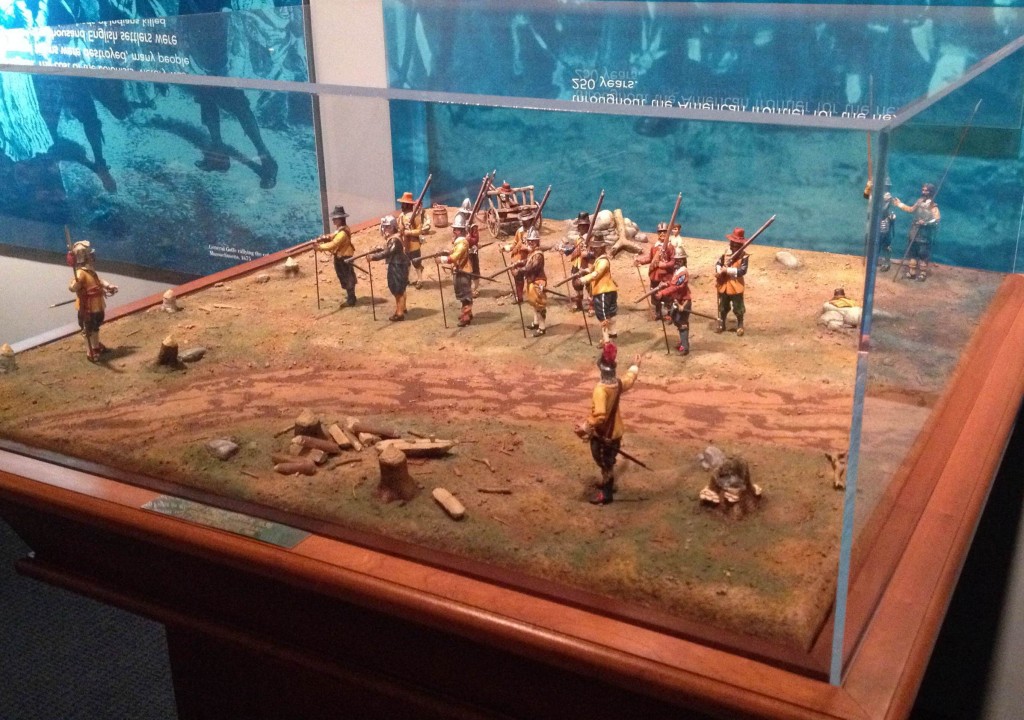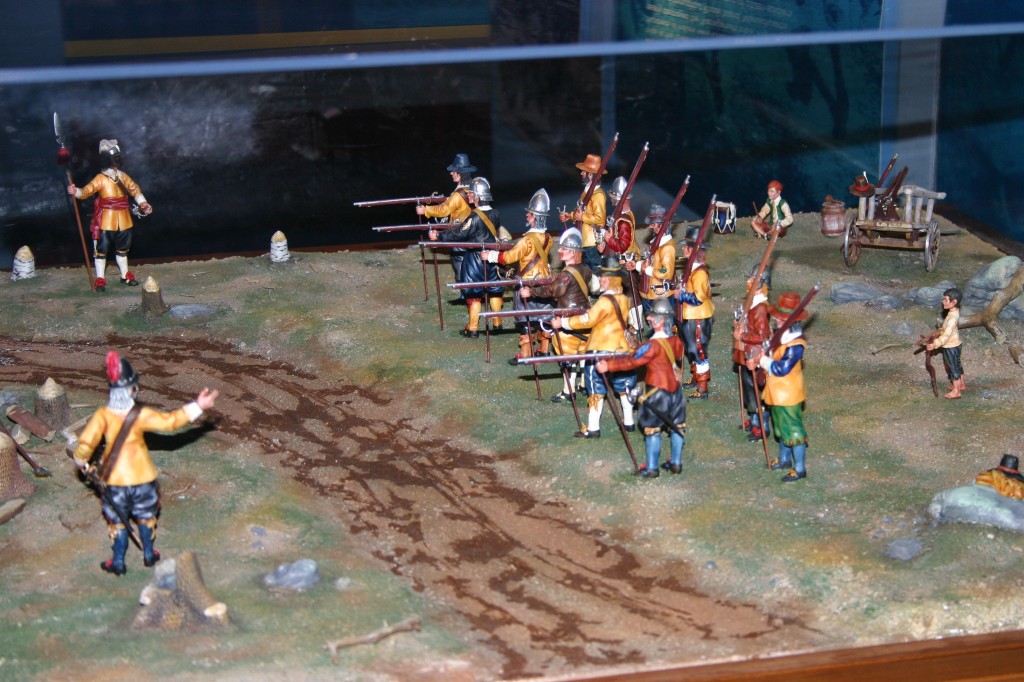The first artifact that greets visitors as they enter the National Guard Memorial Museum’s Militia Era Gallery is not a relic from the historical first muster 377 years ago, but is instead a tribute to that momentous occasion—a diorama of the first muster created by sculptor Andrew Chernak.

Based on artist Don Troiani’s National Guard Heritage Painting and commissioned in 1987, the diorama depicts sixteen men and two boys on the town green, where each of the three newly created regiments would train and socialize. The soldiers in the scene make up the East Regiment, which was the first to muster in the spring of 1637 after the Massachusetts Bay Colony’s General Court created the three regiments—East, North and South—on December 13, 1636.
Commanded by Colonel John Endicott, the East Regiment was organized in the Salem, Chelsea and Ipswitch area of Massachusetts Bay. Its modern-day descendent is the 101st Engineer Battalion. The North Regiment, commanded by Colonel John Hays, was organized in the Concord, Dedham and Charlestown area. The 181st and 182nd Infantry Regiments descended from this unit. Organized in the Boston area, the South Regiment was commanded by Colonel John Winthrope, who was also governor of the colony. The South Regiment would become the 101st Field Artillery Regiment. These three regiments are considered the oldest three military units in the United States, and with their establishment the National Guard was born.
Chernak’s diorama was dedicated to the museum in honor of the National Guard’s 350th birthday. After populating the landscape with fourteen soldiers, Chernak added two pikemen, who would have been a part of the militia during that time, as well as two boys sitting behind the soldiers observing their movements. He modeled these two boys on his own two sons, adding a personal touch to the diorama and visualizing the connection between citizens and soldiers.

Both Chernak—the sculptor—and Troiani—the painter—attended the birthday celebration that took place at NGAUS headquarters that year. Chernak received a print of Troiani’s painting while Troiani received a replica of one of Chernak’s sculpted soldiers. Both works of art continue to celebrate the Guard’s heritage and honor its legacy.

